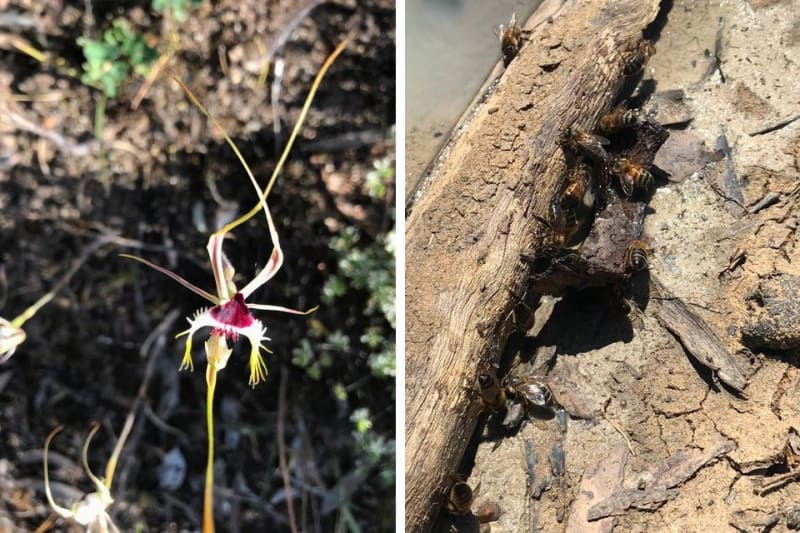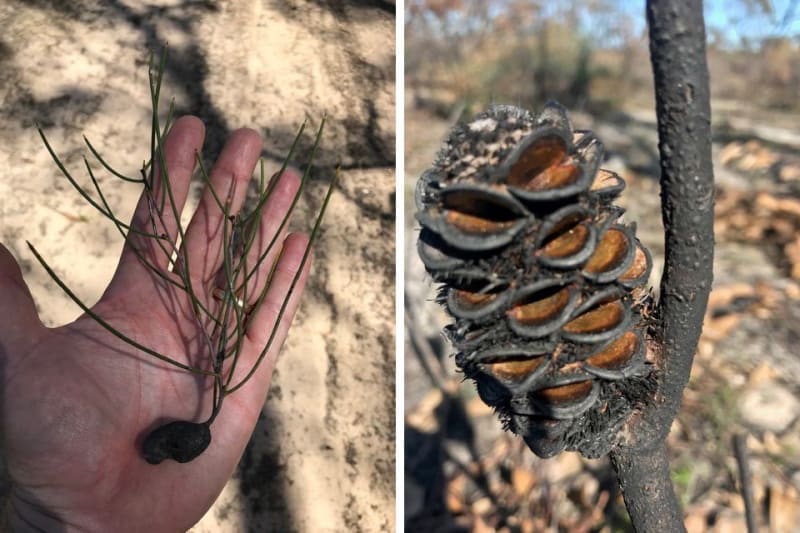Little Desert National Park VIC Bush Blitz | Oct 2018
This entirely new group belongs to the family of scientists called Botanists. These magnificent creatures are able to spot an interesting plant from 30 metres away, can identify it to the genus and species level and are able to relate their knowledge to an absolute beginner of a botanist.
As we headed down the Mount Moffatt track which runs south almost parallel to the border with South Australia, Andre, Daniel, Val and I found a burnt out area of blackened forest remnants. Amidst the destruction and regrowth was the tiny Levenhookia pusilla at only about 4 cm high. It took the trained eye of a botanist to spot it in the ash, surrounded by other wonders.

We saw many other wildflowers and creatures on our way further south and then climbed to the highest point in all of Little Desert National Park- the peak of Mount Moffatt. This small sand dune is the tallest piece of land in Little Desert which is very flat.
We ventured across our most difficult ground today with deep sand and muddy bogs slowing us down. These parts presented a challenge for us but an opportunity for wildlife as bees took advantage of the water to get clean and cool.
The abundance of wildflower continued with chocolate lillies, sun orchids and spider orchids. The most impressive find though, which Andre explained to me, was the Hakea rostrata. This plant forms a woody follicle which holds two papery seeds until either the branch dies or the plant is burnt by fire. The follicle dries out and eventually splits apart, spreading the seeds through the landscape. This amazing adaptation allows the plant to reproduce after its death.
The job of a botanist is to find interesting plants as well as recording the find details such as species, GPS location, time, date and a description of the area. Samples are taken by carefully parts of the plant such as leaves, flowers and fruits which show off its unique, identifying features. These are “pressed” by placing them between paper sheets and weighing them down while they dry completely and are used for later research.

ACTIVITY
Press the parts of a plant yourself! Collect a whole small plant or parts of a larger plant. Lay them on top of two sheets of paper so that they don’t overlap. Add 2 more sheets of paper and then add a few heavy books. Leave it in a warm, dry place for 2 weeks.